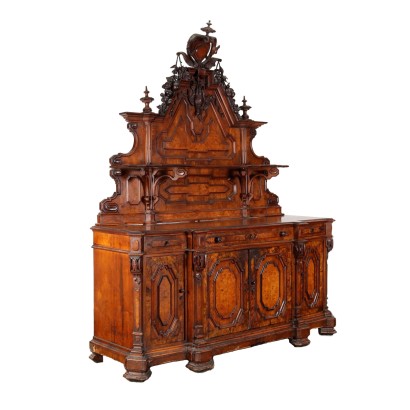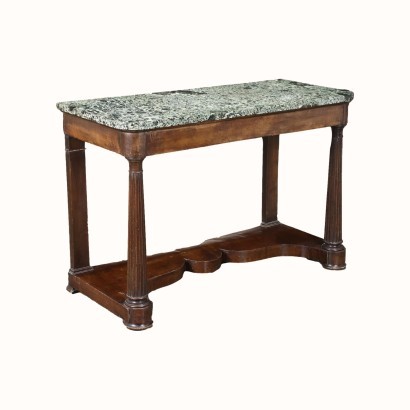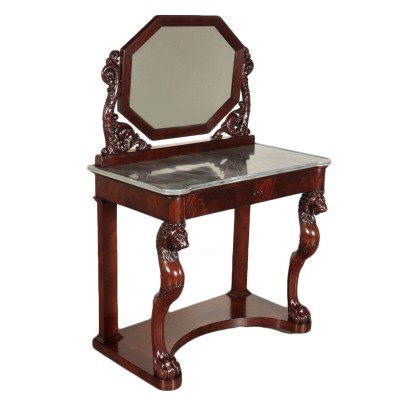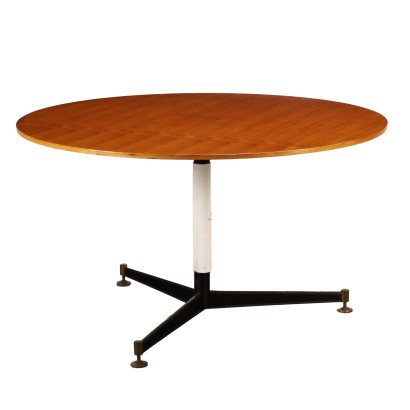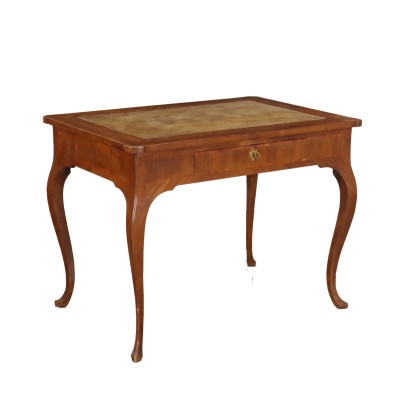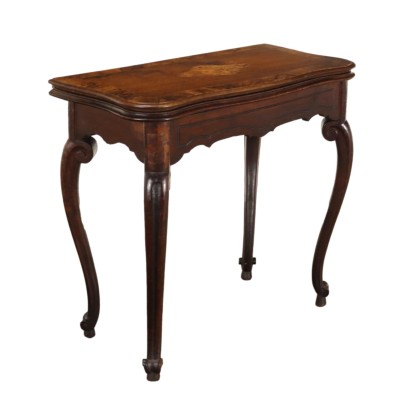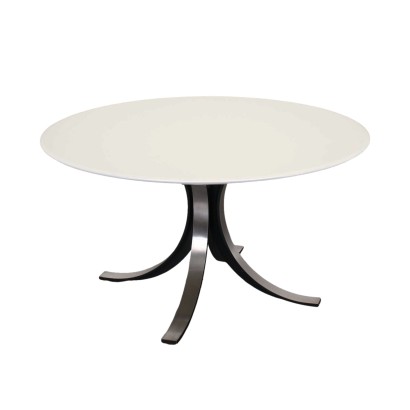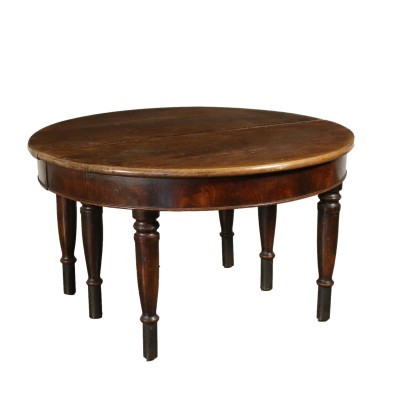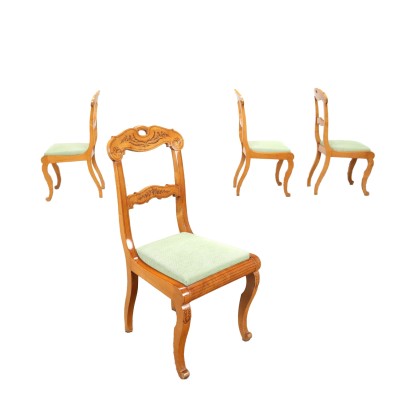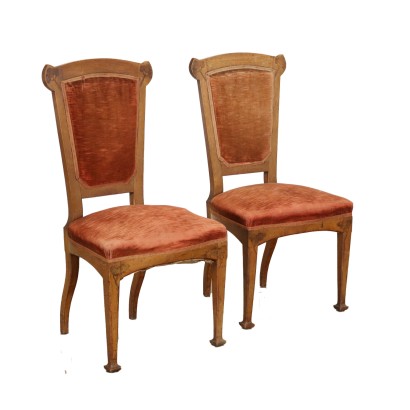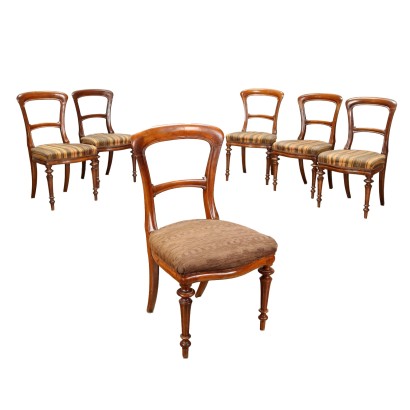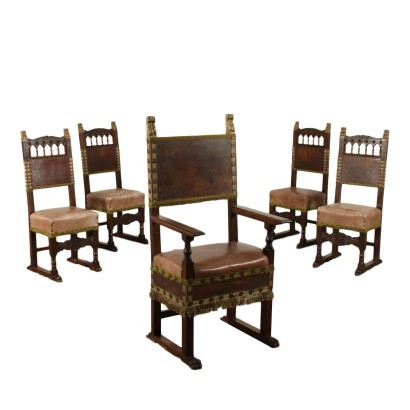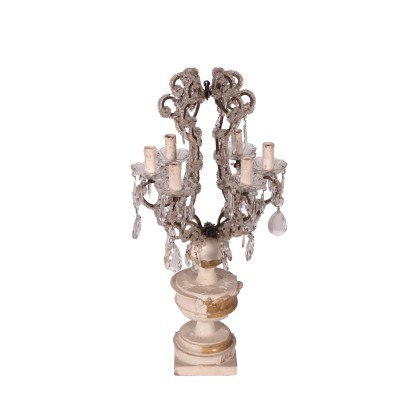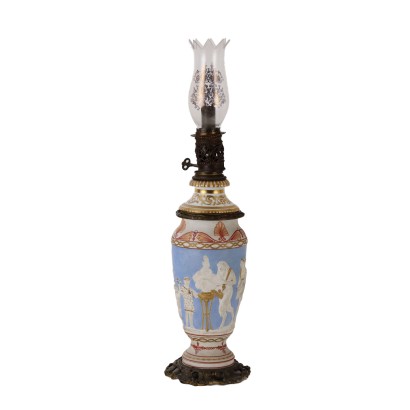Cupboard Umbertino Walnut Italy XIX Century - Central Italy Late 19th century
Features
Central Italy Late 19th century
Style: Umbertino (1870-1900)
Age: 19th Century / 1801 - 1900
Origin: Central Italy
Main essence: Walnut , Elm , Sessile Oak
Material: Carved Wood , Walnut Burl , Elm Burl
Description
Cupboard with Umbertine riser in walnut, walnut briar and elm briar, central Italy, late 19th century. Stand with front shelf and pair of grissinated half-columns, characterized by a richly carved medallion molding, festoons of fruit and central trio of game; architectural body with 3 drawers in the band and 4 doors, front entirely decorated with briar reserves and frames, molded feet. Interior in oak.
Product Condition:
Product that due to age and wear requires restoration and resumption of polishing.
Dimensions (cm):
Height: 262
Width: 209
Depth: 65
Additional Information
Style: Umbertino (1870-1900)
The name of this style is due to the ruler of the time Umberto I, appointed King of the Kingdom of Italy on 9 January 1878 and assassinated on 9 July 1900.The Umbertino style is typically Italian and belongs to that Eclectic period that characterized the second half of the 19th century, which lasted just under twenty years, the Umbertino style spread around 1880 and ended around 1895 when a new style called Liberty and universally known took over. like Art-Nouveau to be followed by Art-Decò.
In this style, mainly eclectic and monumental, Gothic and Baroque elements originally belonging to the Renaissance but also adorned with large masks, frames and decorations were re-proposed in the furniture, from the bedside table to the large wardrobe or sideboard.
Find out more about the Umbertine style with our insights:
An Umbertine secretary dedicated to Dante Alighieri
A comparison between a Luigi Filippo console and an Umbertina one



